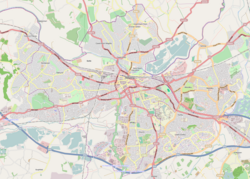The Liebenrood family
The present regency style house, known as The Mansion House (and originally named Prospect House), was built by John Liebenrood in the late 18th century. John Engelberts Liebenrood (1754-1821) was born in Germany in 1754. His birth name was John Engelberts Ziegenbein and he immigrated to England and obtained naturalisation in 1781. [7] He lived with his great uncle John George Liebenrood, a very wealthy merchant in Purley. When his uncle died in 1795 he inherited his fortune and in accordance with the will changed his name to Liebenrood. [8] In the following year he married Lucy Hancock whose brother was Rear Admiral John Hancock.
Soon after his marriage John commissioned James Wright Sanderson, a pupil of James Wyatt to substantially remodel and enlarge a smaller existing building. [9] The newspapers show that he and his wife Lucy were living in their new home by 1797. [10] John became High Sheriff of Berkshire in 1806. Lucy was known to be a benefactor of the poor. [11] He died in 1821 and Lucy continued to live at Prospect House until her death in 1829. They are both buried in St Mary's Church Purley.
Their son George and daughter Lucy inherited the property but they did not live there. Instead it was rented for many years to William Stephens (1783-1856) who at one time was the Mayor of Reading. [12] He died in 1856 and it was then rented by William Banbury (1813-1893) who was a banker in the firm Fuller Banbury and Co of London. [13] He was also an art collector and when he moved from Prospect Park in 1880 a sale of some of his paintings was held by Christie's at the House. [14]
George and Lucy Liebenrood did not have any children, so when they died Prospect Park was inherited by their cousin Captain John Hancock. He changed his name to Liebenrood in 1865 as a condition of the inheritance. [15] John was born in 1813 near Dover. [16] His father was Rear Admiral John Hancock. In 1847 he married Eliza Cambridge (1818–1888) the daughter of Lemuel Cambridge, a shipowner of Canada. [17] He entered the navy in 1827 and spent 35 years in the naval service, rising to the rank of captain. He died in 1883 and his wife Elizabeth died in 1888. Both are buried in the Church of St Michael, Tilehurst.
Their son Major George Engelberts Liebenrood (1847–1928) inherited the house after Elizabeth's death. George was born in 1847 on Prince Edward Island, Canada. At the age of 18 he went to the Royal Military College, Sandhurst. [18] He had a distinguished military career and rose to the rank of Major. In 1881 he married Winifred Markham (1858–1930), the daughter of Arthur Bayley Markham of Glendon. The couple lived at Prospect Park for about fourteen years, and then in 1902 they sold it to the Reading Borough Council.
Murder
The murder of Mary-Ann Leneghan occurred on 7 May 2005.
Macaws (Parrots)
Missy the free-flying macaw one of the beloved parrots known as Reading's best pet' and a resident of Tilehurst, was tragically shot and killed with an air rifle on Tuesday, September 20, 2022. She was one of two Blue and Gold Macaws that frequently soared over Prospect Park and throughout Reading, alongside her companion, Cairo. The two birds, who have been inseparable for over five years, grew up together with just a four-month age difference.




